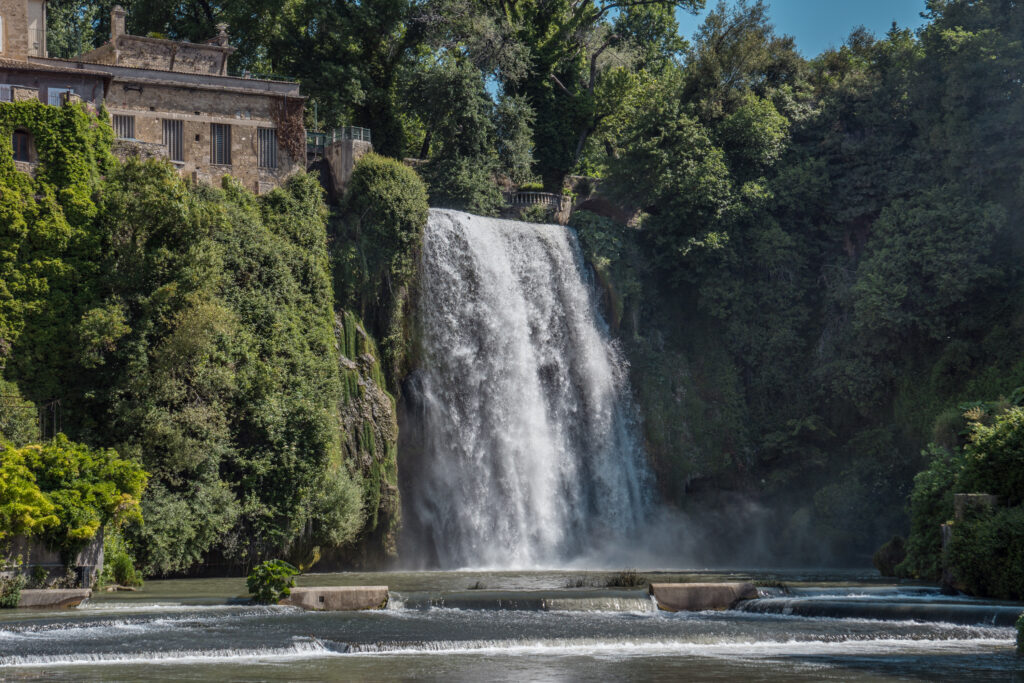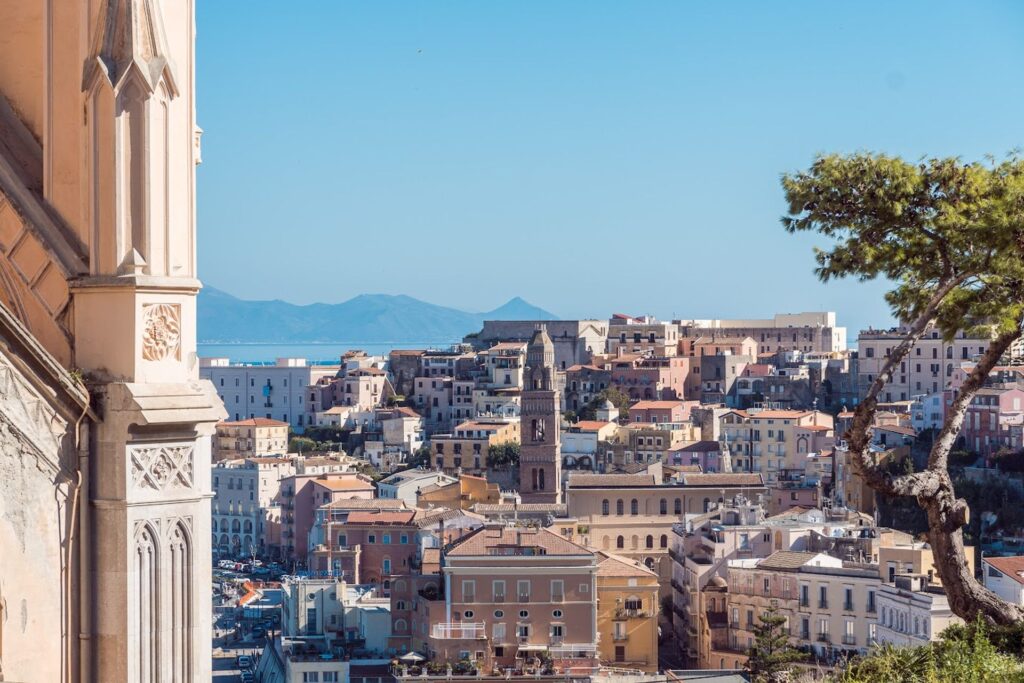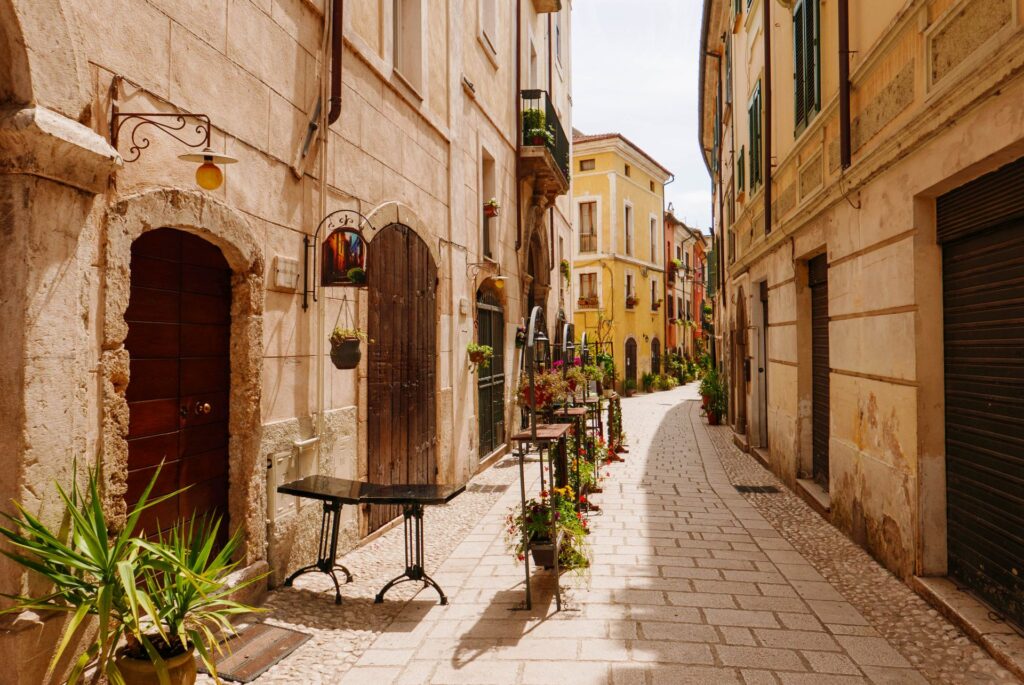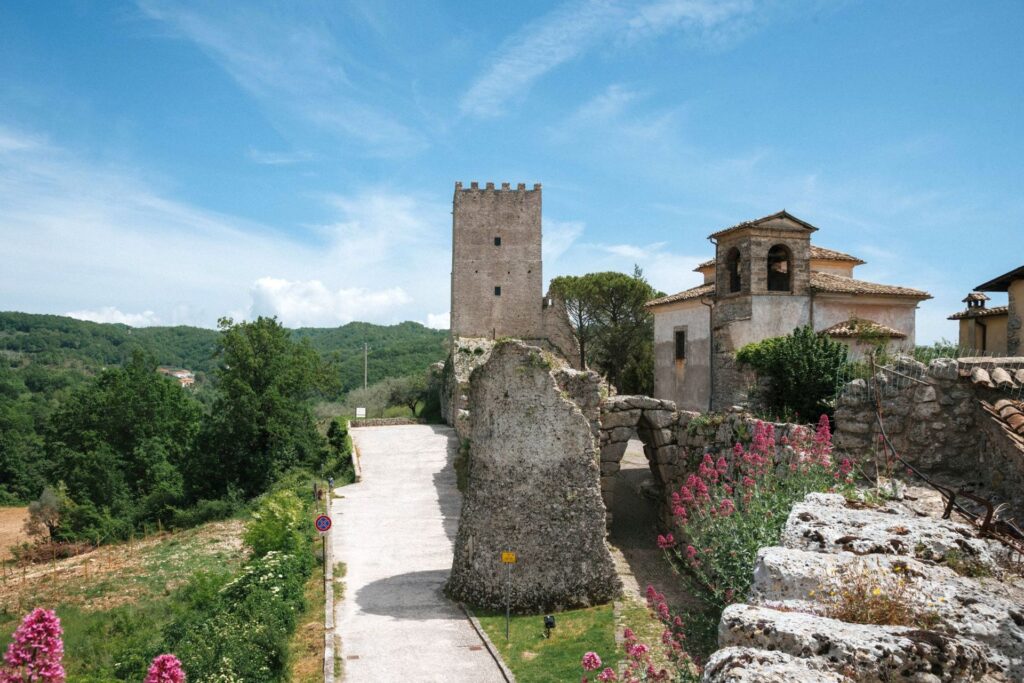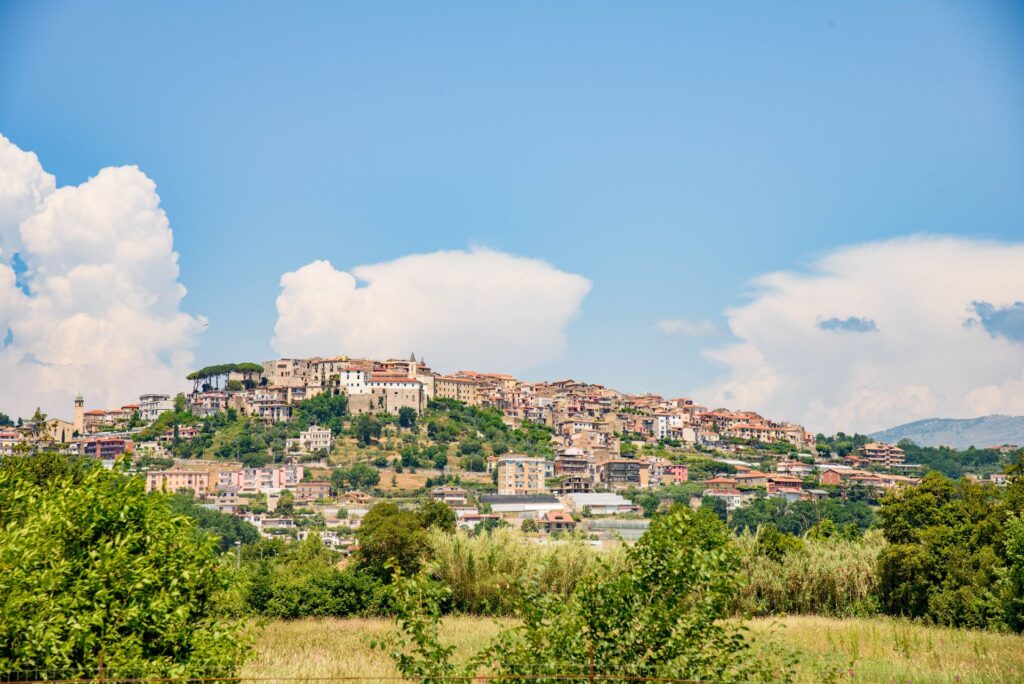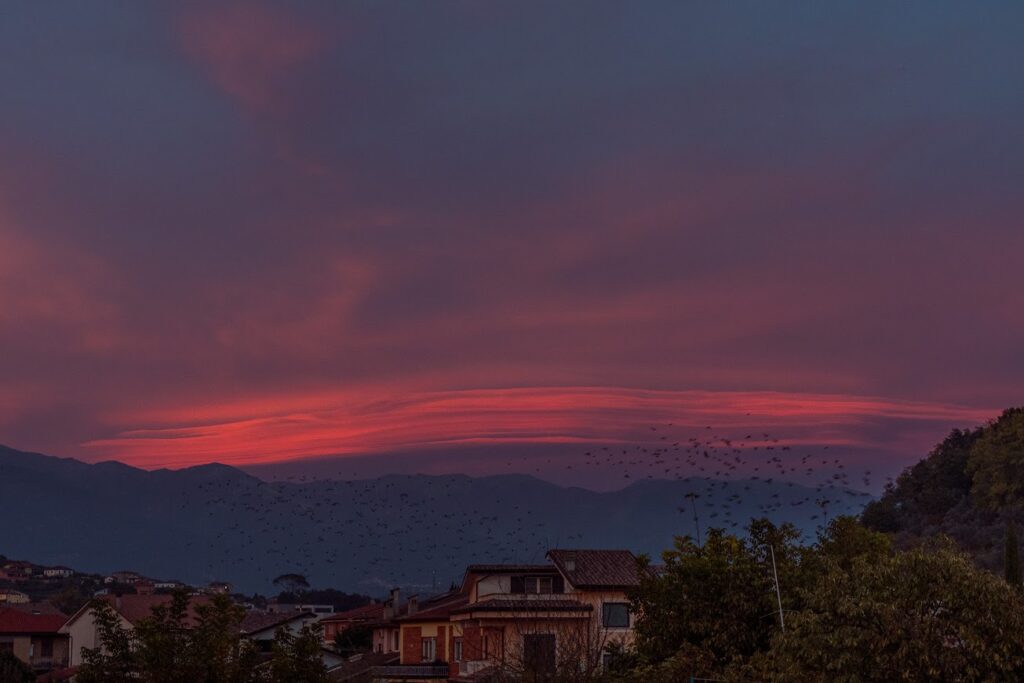Villages
Alvito
The village of Alvito
Alvito, one of the most romantic and charming villages of the Comino Valley, is divided into three main districts, located along the southern slope of Mount Morrone: at the highest point, about 700 m above sea level, is the Castello district, the oldest; halfway up the hill is the Peschio, with a medieval layout, while on the slopes of the hill is the largest and most populous settlement, called ‘Valle’.
In the plain below there are the most ancient testimonies: remains of farms and rustic villas of the Roman age, with imposing terrace walls in polygonal masonry. Many archaeological finds are also preserved near the church of Santa Maria del Campo.
The first settlement, called Sant’Urbano, was built by the Benedictine monks around the tenth century near Colle della Civita, east of the current town. Alvito was founded around 1096.
From the following century its territory was under the rule of the Counts of Aquinas, then it became the capital of the fief of Cantelmo (XV century), a family related to the royal house of Aragon, obtaining also the privilege of its own mint, which beat the coin called “horse”.
In 1595, Cardinal Tolomeo Gallio, Secretary of the Papal States, purchased the county of Alvito, which later became the capital of the Duchy.
He favoured the development of the lower town, with the construction of the Ducal Palace and the opening of the main street, today’s Corso Gallio, along which elegant aristocratic palaces were built and the main economic and cultural activities developed. The Gallio family was a very important dynasty that lasted until the end of feudalism in 1806.
The tour of Alvito can start from the characteristic alleys of the oldest village developed around the Castle, which was for a long time the political and military centre of the Duchy. The manor, from which there is a breathtaking view over the Comino Valley, is defended by a large wall with a trapezoidal plan, with four corner towers and the parade ground.
It was built in the 11th century by the Counts of Aquino, destroyed by a violent earthquake in 1349 and then restored and enlarged by Duke Rostaino Cantelmo.
Leaving the Castello district, a short walk leads to Peschio, dominated by the 11th-century Church of the Holy Trinity and the 17th-century Palazzo Panicali, with its elegant rusticated portal and two dovecote towers.
The tour continues with a visit to the Valle district: a charming tree-lined avenue leads to Porta Iacobelli, which connects two imposing buildings, the convent of S. Teresa upstream and Palazzo Mazzenga-Lecce below.
Da qui si accede al corso principale di Alvito, lungo il quale si susseguono palazzi nobiliari, chiese e conventi. L’edificio più importante è il Palazzo Ducale, attuale sede del Comune, con il piccolo Teatro di Corte e la Sala della Ragione decorata con due grandi tele di Nicola Malinconico (1663-1721), un artista napoletano allievo di Luca Giordano, ispirate alla ‘Gerusalemme Liberata’ di Torquato Tasso. Nella vicina Collegiata di San Simeone Profeta si trovano altre pregevoli opere, come la Crocifissione del Cavalier D’Arpino (1568-1640) che fu maestro del Caravaggio e la Presentazione di Andrea Solari (1460-1520 ca), allievo di Leonardo Da Vinci.
Assolutamente da non perdere è anche la caratteristica Porta Vado Grande, che conserva ancora l’arco a sesto acuto. Era il principale accesso alla città da sud-ovest nonché passaggio obbligato per il mercato, che si svolgeva ogni sabato fuori le mura in prossimità del Lavatoio Pubblico, recentemente restaurato. Il vicino ex Convento di San Nicola, costruito nel Cinquecento, è oggi sede dell’Istituto Agrario di Alvito.
A questa città sono legati personaggi illustri, come il poeta Giacomo Leopardi che dimorò nel palazzo Mazzenga durante il suo viaggio verso Napoli; il filosofo Benedetto Croce e il cardinale Montini (il futuro papa Paolo VI), ospiti della famiglia Sipari.
Ad Alvito nacquero l’umanista Mario Equicola, precettore di Isabella d’Este; il vescovo Bernardino Elvino, tesoriere generale della Camera Apostolica ai tempi di papa Paolo III Farnese ed Erminio Sipari, cugino di Croce, nonché fondatore del Parco Nazionale d’Abruzzo e suo Presidente.
Tra i numerosi percorsi da fare a piedi, a cavallo e in mountain bike da non perdere il sentiero che si snoda tra i villaggi “fantasma” della Cappudine e di Cortignale, antichi borghi abbandonati nella prima metà del Novecento e la misteriosa dolina carsica di Fossa Maiura, le cui ripide pareti offrono riparo per rare specie di rapaci.

